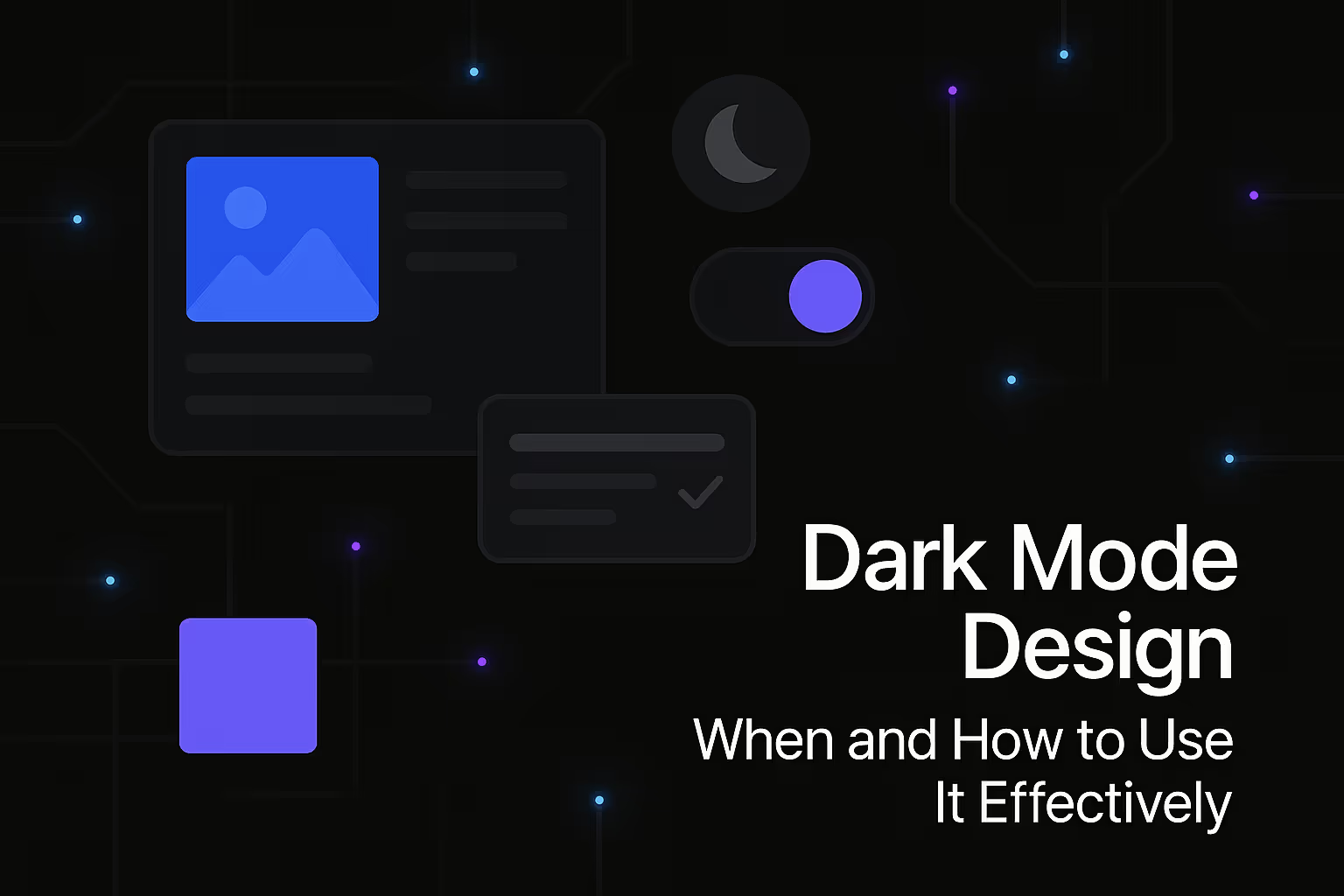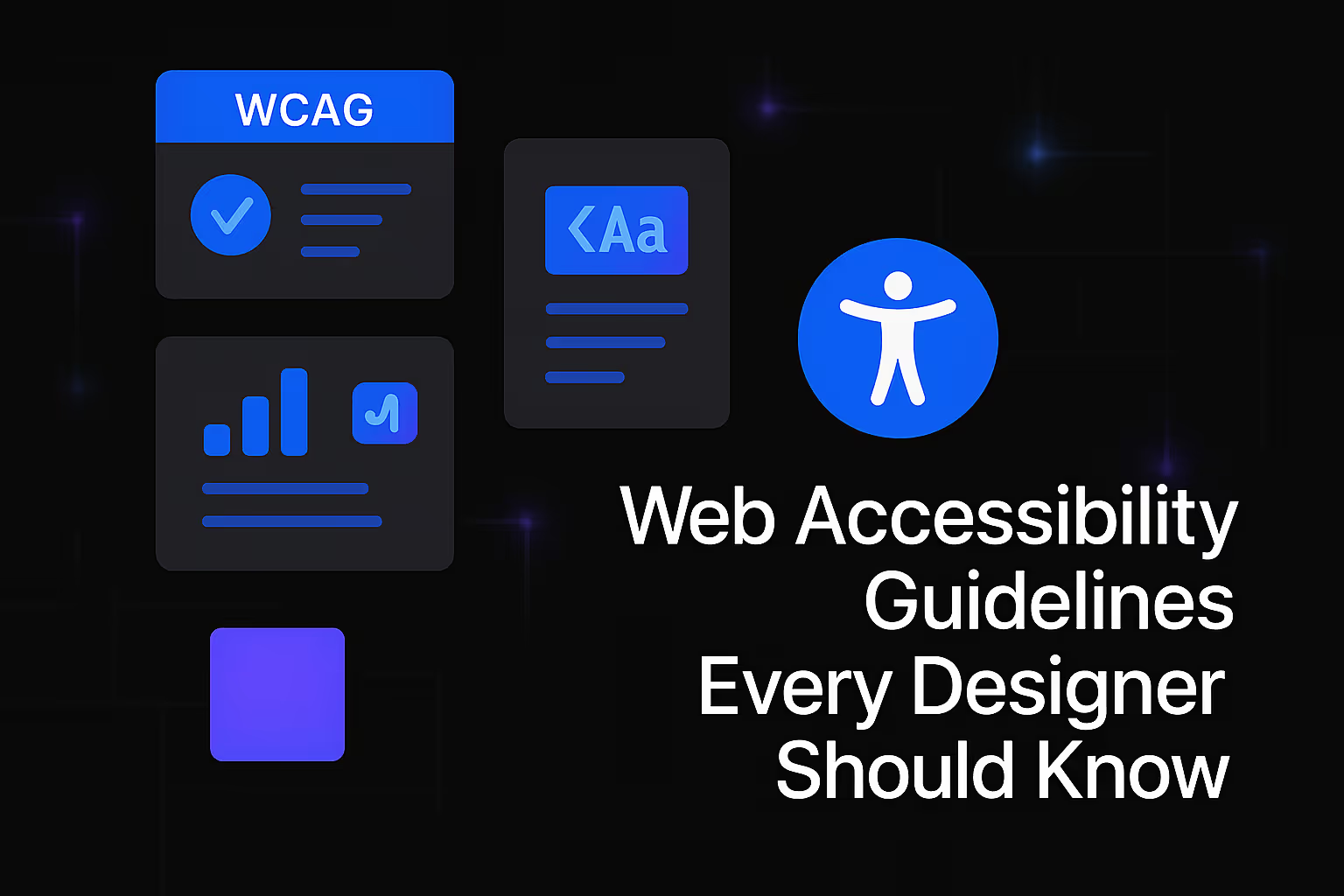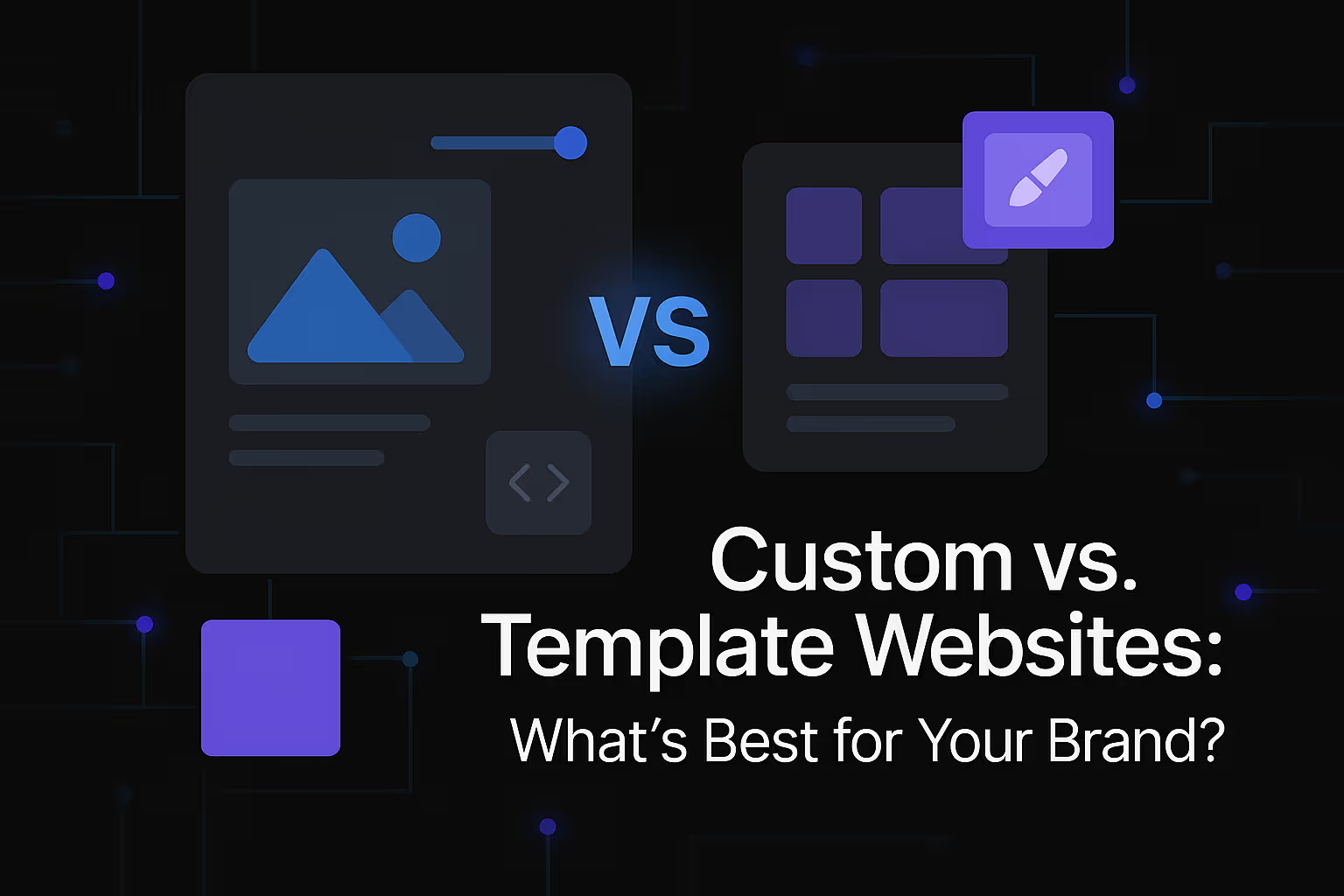Dark Mode Design: When and How to Use It Effectively

Dark mode has emerged as a prominent design trend, captivating users with its sleek aesthetic and purported benefits. Beyond a mere visual preference, implementing dark mode strategically can significantly enhance user experience, improve accessibility, and even contribute to energy efficiency on certain devices. However, its effectiveness hinges on thoughtful application, understanding both its advantages and its limitations. This comprehensive guide delves into the nuances of dark mode design, exploring when and how to leverage it for optimal impact, ensuring your digital products stand out while serving user needs.
The Allure of the Dark Interface: Why Dark Mode Resonates
The increasing popularity of dark mode is not accidental; it stems from a confluence of user preferences, practical advantages, and technological advancements. As screens become more pervasive in our daily lives, the desire for visual comfort and reduced eye strain during extended use has grown exponentially. Dark interfaces, characterized by light text on a dark background, offer a compelling alternative to the traditional light-on-dark paradigm, providing a softer, less intense visual experience.
One of the primary drivers behind dark mode's appeal is its ability to mitigate eye strain, particularly in low-light environments. Bright screens in dark settings can cause significant discomfort, leading to fatigue and even headaches. Dark mode reduces the amount of emitted light, creating a gentler contrast that is easier on the eyes. This is particularly beneficial for users who spend long hours in front of screens, such as developers, writers, or gamers. The reduced blue light emission associated with dark interfaces is also often cited as a benefit, as excessive blue light exposure, especially in the evening, can disrupt sleep patterns. While the scientific consensus on this specific claim is still evolving, the perceived benefit contributes significantly to user adoption.
Beyond eye comfort, dark mode offers a distinct aesthetic appeal. It exudes a sophisticated, modern, and often premium feel. This can be leveraged by brands to create a strong visual identity that resonates with their target audience. For applications centered around media consumption, such as streaming services or photo editors, dark mode can enhance content focus by minimizing distractions from the interface itself, allowing the visual elements to truly pop. The dark canvas serves as a neutral backdrop, making vibrant colors and intricate details within the content more prominent and immersive.
Furthermore, for devices with OLED screens, dark mode can lead to tangible energy savings. OLED technology works by illuminating individual pixels, meaning black pixels consume virtually no power. Consequently, a dark mode interface with predominantly black areas will draw less power, extending battery life. This practical advantage, while not universal across all screen types, adds another layer of appeal for users prioritizing device longevity and energy efficiency. The confluence of these factors – enhanced visual comfort, aesthetic appeal, improved content focus, and potential energy savings – underscores the significant and multifaceted reasons behind dark mode's widespread embrace.
Strategic Implementation: When to Offer Dark Mode
Deciding when to offer dark mode is as crucial as understanding its design principles. It's not a one-size-fits-all solution, and its efficacy is highly dependent on the context of use, the nature of the content, and the preferences of your target audience. A thoughtful approach to its implementation ensures it adds genuine value rather than becoming a mere superficial feature.
One of the most compelling reasons to offer dark mode is to accommodate users who regularly interact with your application or website in low-light conditions. This includes individuals who work late into the night, those using devices in dimly lit rooms, or even commuters on public transport during evening hours. For these users, a bright interface can be jarring and uncomfortable, leading to a diminished experience. Providing a dark mode option caters directly to their environmental needs, significantly enhancing their comfort and reducing visual strain. Consider applications like code editors, e-readers, or social media platforms, where extended use in varying light conditions is common. Offering a dark theme for these types of products aligns directly with user behavior and expectations.
Another critical consideration is the nature of the content being displayed. Dark mode excels in scenarios where the primary focus is on visual media, such as images, videos, or graphic-intensive dashboards. In these cases, a dark background provides a high-contrast canvas that makes the content stand out, allowing colors to appear more vibrant and details more pronounced. Think of a photography portfolio, a video editing suite, or a movie streaming application. The dark interface recedes into the background, drawing the user's eye directly to the rich visual elements, creating a more immersive and engaging experience. Conversely, for content that is predominantly text-heavy, such as long-form articles, news sites, or legal documents, a light mode often remains superior for readability, as the contrast between black text on a white background is generally considered optimal for sustained reading.
User preference also plays a significant role. Many users simply prefer the aesthetic of dark mode, irrespective of lighting conditions or content type. Offering dark mode as an option empowers users to customize their experience, providing a sense of control and personalization. This flexibility can lead to increased user satisfaction and engagement. Implementing an automatic dark mode toggle based on system settings is a particularly user-friendly approach, as it respects the user's global preferences without requiring manual intervention within your application. This demonstrates an understanding of modern operating system conventions and provides a seamless experience.
However, there are scenarios where dark mode may not be ideal or even detrimental. For instance, applications that rely heavily on precise color representation, such as graphic design tools or medical imaging software, might struggle with the perceptual shifts that can occur in a dark environment. Similarly, websites or applications with vibrant, light-themed branding might find that a dark mode clashes with their established visual identity. In these cases, it's crucial to weigh the potential benefits against the risks of compromising brand consistency or functional accuracy. Ultimately, the decision to implement dark mode should be a strategic one, rooted in a deep understanding of your users, your content, and your brand. It should enhance the user experience, not detract from it.
Mastering the Aesthetics and Functionality of Dark Mode
Designing an effective dark mode goes far beyond simply inverting colors. It requires a nuanced understanding of color theory, contrast, accessibility, and user psychology. A poorly executed dark mode can be more detrimental than no dark mode at all, leading to readability issues, visual fatigue, and a diminished user experience. The goal is to create a dark interface that is both visually appealing and highly functional, ensuring consistency and clarity across all elements.
One of the most critical aspects of dark mode design is the careful selection of a color palette. Simply converting white to black and black to white will often result in a jarring and uncomfortable experience. Instead of pure black, opt for deep grays or muted dark tones as your background color. These shades provide a softer contrast with text and other UI elements, reducing eye strain and preventing a "glowing" effect where light elements appear to vibrate against a stark black background. Think of the difference between writing on a blackboard with bright chalk versus drawing on a dark gray paper with a white pencil – the latter is much gentler on the eyes. Similarly, avoid pure white for text; instead, use slightly desaturated whites or very light grays. This subtle shift significantly improves readability and reduces the harshness of the contrast.
Contrast is paramount in dark mode. While you want to avoid extremes, sufficient contrast is essential to ensure legibility and distinguish between different UI elements. Adhere to accessibility guidelines, such as WCAG (Web Content Accessibility Guidelines), which recommend specific contrast ratios for text and non-text elements. This is particularly important for users with visual impairments. Test your color combinations thoroughly to ensure they meet these standards, as what appears clear in light mode may become difficult to discern in dark mode. Consider using a consistent hierarchy of colors to indicate importance or interactivity. For example, a slightly lighter shade of gray for active states or selected elements can provide clear visual cues without being overly bright.
Typography also requires careful consideration in dark mode. While the same fonts can be used, their weight and size may need adjustments to maintain readability. Thinner fonts, which appear crisp and clear on a light background, can sometimes become faint or "fuzzy" on a dark background. Consider using slightly bolder weights or increasing font size marginally for optimal legibility. Line height and letter spacing might also need subtle adjustments to prevent text from feeling cramped or overwhelming. The goal is to ensure that the text remains sharp and easy to read, even after prolonged exposure.
Beyond colors and typography, consider the treatment of images and illustrations. Some images, especially those with light backgrounds or subtle details, might lose their impact or even appear distorted in dark mode. You may need to provide alternative versions of certain graphics, or adjust their opacity or saturation, to ensure they integrate seamlessly with the dark aesthetic. For instance, icons that are typically black on a white background will need to be inverted or redesigned to be white or light gray on a dark background. Consistency in icon design and illustration style across both modes is vital for a cohesive user experience.
Interactive elements and states, such as buttons, links, and form fields, also demand attention. Their default, hover, and active states should be clearly distinguishable in dark mode. Avoid using overly saturated or neon colors for these states, as they can be distracting and visually jarring against a dark backdrop. Instead, opt for subtle shifts in lightness or saturation, or use a consistent accent color that provides sufficient contrast without being overwhelming. The overall aim is to create a visual language in dark mode that mirrors the clarity and intuitiveness of your light mode design, ensuring a seamless and enjoyable experience for all users. By meticulously addressing these design considerations, you can create a dark mode that not only looks good but also functions exceptionally well, enhancing the overall usability and appeal of your digital product.
Optimizing for Accessibility and User Experience in Dark Mode
Accessibility is not an afterthought in dark mode design; it is a fundamental pillar that dictates its effectiveness. A dark mode that fails to consider the diverse needs of users, particularly those with visual impairments or specific environmental sensitivities, falls short of its potential. True optimization extends beyond mere aesthetics, embracing principles that ensure all users can comfortably and effectively interact with your interface.
One of the most critical aspects of accessibility in dark mode is ensuring adequate contrast. As previously mentioned, while the goal is to reduce overall brightness, maintaining sufficient contrast between text and its background, as well as between different UI elements, is paramount. Relying on WCAG guidelines, specifically the contrast ratio requirements (e.g., 4.5:1 for normal text and 3:1 for large text), is essential. Tools and plugins can help designers check contrast ratios during the design process, identifying potential issues before development. This proactive approach prevents situations where certain text becomes unreadable or where interactive elements are indistinguishable from static content. Remember, a common pitfall is using overly dark shades of gray for backgrounds and foreground elements, leading to a muddy, low-contrast interface that is difficult to navigate.
Beyond contrast, consider the impact of dark mode on color perception, especially for users with color vision deficiencies. Certain color combinations that work well in light mode might become problematic in dark mode. For instance, some shades of red or green might appear muted or indistinguishable against a dark background for individuals with certain types of color blindness. It's advisable to test your dark mode palette with color blindness simulators to identify and rectify any potential issues. Relying on more than just color to convey information – such as using icons, patterns, or text labels in conjunction with color – can significantly improve accessibility for all users.
The readability of text in dark mode is another key area for optimization. While a general principle is to use lighter text on dark backgrounds, the specific shade of "white" or "light gray" matters. Pure white text on a pure black background can sometimes create a "halation" effect, where the light text appears to bleed into the dark background, making it harder to focus. Slightly desaturated whites or very light grays are often preferred, as they provide a softer contrast that is gentler on the eyes. Additionally, consider text sizing and spacing. In some cases, slightly increasing font size or adjusting line height can improve readability in dark mode, compensating for any perceptual differences caused by the inverted color scheme.
Beyond visual considerations, the overall user experience in dark mode should be seamless and intuitive. This means ensuring that navigation patterns, interactive elements, and information hierarchy remain consistent with the light mode version. Users should not have to relearn how to use your application simply because they switched themes. The functionality should be identical, with only the visual presentation changing. Provide clear and easily discoverable options for switching between light and dark modes, ideally integrating with system-wide preferences. This allows users to set their preferred mode once and have it apply across all compliant applications, enhancing convenience and reducing cognitive load.
Finally, gather user feedback on your dark mode implementation. Conduct usability testing with a diverse group of users, including those with varying visual abilities and preferences. Their insights can reveal unexpected challenges or highlight areas for improvement that might not be apparent during the design phase. Iterative refinement based on real-world usage is crucial for perfecting your dark mode experience. By prioritizing accessibility and meticulously optimizing for user experience, dark mode can transcend its status as a mere aesthetic choice and become a truly valuable feature that caters to the diverse needs of your audience, fostering greater engagement and satisfaction.
Dark Mode and SEO: A Complementary Relationship
While dark mode primarily impacts user experience and visual design, its indirect relationship with SEO is becoming increasingly relevant. Search engines, particularly Google, are placing a growing emphasis on user-centric signals and page experience. A well-implemented dark mode, by enhancing user comfort and engagement, can contribute positively to these signals, subtly influencing your organic search performance. Understanding this complementary relationship allows for a more holistic approach to digital product optimization.
One of the most direct ways dark mode can impact SEO is through improved user engagement metrics. When users find an interface comfortable and enjoyable, they are more likely to spend longer on the site or within the application, explore more pages, and interact more frequently with the content. These actions translate into positive user signals such as increased time on page, lower bounce rates, and higher click-through rates on internal links. Search engines interpret these signals as indicators of a high-quality, valuable user experience. In Google's algorithm, a positive user experience is a known ranking factor, and any element that contributes to it, including a well-executed dark mode, can indirectly support better SEO rankings.
Furthermore, dark mode's potential to reduce eye strain and improve readability, especially in low-light conditions, can lead to a more positive overall perception of your website or application. Users are more likely to return to a platform that prioritizes their comfort and offers a tailored experience. This contributes to increased returning visitors and brand loyalty, which can further strengthen user signals over time. A site that is perceived as user-friendly and considerate of its audience's needs is more likely to be favored by search engines, as it aligns with their goal of delivering the most helpful and relevant results to users.
However, it's crucial to understand that dark mode itself is not a direct SEO ranking factor. Google does not explicitly rank sites higher simply because they offer a dark theme. The influence is indirect, stemming from the impact dark mode has on user behavior and the resulting user signals. Therefore, simply adding a dark mode without addressing core SEO principles, such as high-quality content, technical optimization, and mobile responsiveness, will yield minimal to no SEO benefits. Dark mode should be viewed as an enhancement that complements a robust SEO strategy, not a replacement for fundamental best practices.
Moreover, ensuring the technical implementation of dark mode does not hinder crawlability or indexability is vital. While unlikely if implemented correctly, poorly coded dark mode transitions or dynamic content loading for different themes could theoretically create issues for search engine crawlers if not handled properly. However, modern CSS and JavaScript techniques for theme switching are generally well-understood by crawlers. The key is to ensure that the core content remains accessible and renderable to Googlebot regardless of the chosen theme. Semantic HTML, clear headings, and logical content structure are always paramount, irrespective of the visual theme.
In essence, dark mode contributes to SEO by fostering a superior user experience. A comfortable, readable, and visually appealing interface encourages users to stay longer, engage more deeply, and return more frequently. These positive user behaviors send strong signals to search engines, indirectly supporting your organic search visibility. Therefore, when designing for dark mode, remember its potential as a silent partner in your SEO efforts, working in tandem with content quality, technical optimization, and strategic keyword integration to create a truly high-performing digital asset. It's about building a better, more user-centric web, which ultimately aligns with what search engines strive to promote.
Similar Insights
Stay Updated with Our Insights
Join our newsletter for the latest trends and tips in web development and digital marketing.




